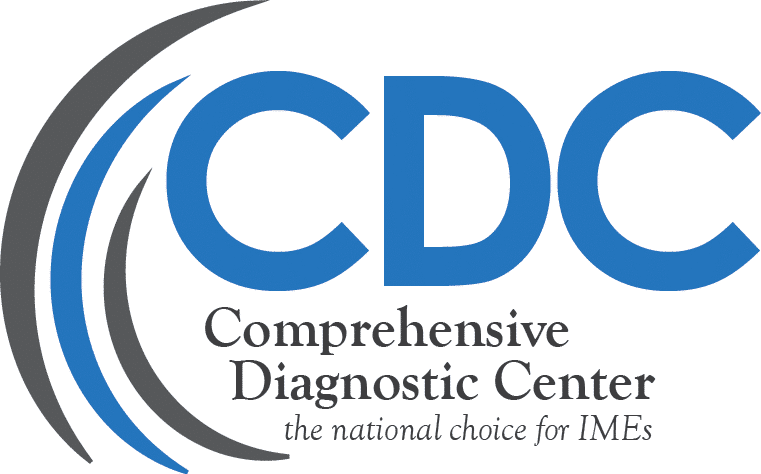The Impact of Accurate Medical Record Reviews on Legal Outcomes
November 1, 2024Achieve Better Results in Workers’ Compensation with Independent Medical Exams (IMEs)
In the intricate and often challenging world of workers’ compensation, ensuring that injured employees receive the care they need while balancing the interests of employers and insurers can be a delicate act. Independent Medical Examinations (IMEs) have emerged as a critical tool, providing the clarity needed to navigate these complexities. By offering an impartial evaluation, IMEs help to align the varying perspectives involved in a workers’ compensation claim, ensuring that decisions are informed, fair, and grounded in medical reality.
 Understanding IMEs within the Workers’ Compensation Framework
Understanding IMEs within the Workers’ Compensation Framework
At the heart of any workers’ compensation claim lies a fundamental question: what is the true nature and extent of the employee’s injury? IMEs play a pivotal role in answering this question. Conducted by a physician who remains independent from the ongoing treatment process, these examinations provide a fresh, unbiased perspective on the injury, diagnosis, and recommended treatment plan.
This objectivity is crucial. When disputes arise—whether about the severity of the injury, the necessity of ongoing treatment, or the employee’s readiness to return to work—an IME serves as a bridge between differing opinions. It’s not just about medical evaluation; it’s about ensuring that all parties have a common ground to work from, fostering a more collaborative approach to resolving claims.
The Power of Impartiality in Achieving Fair Outcomes
The role of impartiality in IMEs cannot be overstated. In a system where emotions can run high and vested interests are at play, the unbiased nature of an IME provides a necessary counterbalance. Treating physicians, while skilled and dedicated, may develop a natural rapport with their patients, potentially influencing their medical opinions. IMEs, however, strip away this potential bias, offering a clear-eyed view of the facts at hand.
This impartiality is not just beneficial—it’s transformative. The Workers Compensation Research Institute (WCRI) underscores the importance of IMEs in curbing fraudulent claims and ensuring that only genuine cases receive compensation (WCRI, 2023). By offering an independent evaluation, IMEs help to eliminate the potential for subjective bias, paving the way for fairer, more accurate decision-making.
Moreover, IMEs are instrumental in evaluating the ongoing need for medical treatment. In some instances, treatments may continue longer than medically necessary, leading to inflated costs and prolonged recovery times. An IME provides a fresh assessment, often revealing that a modified or even discontinued treatment plan may better serve the employee’s recovery while controlling costs (NIOSH, 2022).
Evolving Trends in IMEs: A Closer Look at the Data
As the landscape of workers’ compensation evolves, so too does the role of IMEs. Over the past decade, there has been a notable increase in the use of IMEs, driven by a growing recognition of their value in resolving complex claims. Data from the National Institute for Occupational Safety and Health (NIOSH) reveals a 15% increase in IMEs requested by insurers over the last five years, reflecting a broader trend toward prioritizing objective, data-driven decision-making (NIOSH, 2022).
One area where IMEs have seen particularly significant growth is in the evaluation of psychological injuries. As awareness around mental health in the workplace has expanded, more claims are being filed for conditions like depression, anxiety, and PTSD. These claims require a nuanced and comprehensive evaluation, making the objectivity of an IME more critical than ever.
The impact of IMEs on the resolution of claims is profound. A WCRI study highlights that cases involving an IME are often resolved more quickly and with greater satisfaction from all parties involved. Notably, the presence of an IME in a dispute tends to reduce the likelihood of litigation, as the independent evaluation often clarifies the path forward, reducing uncertainty and conflict (WCRI, 2023).
In recent years, the rise of telemedicine has further expanded the reach and utility of IMEs. The COVID-19 pandemic accelerated the adoption of remote IMEs, offering a flexible and efficient alternative to in-person evaluations. While there are challenges associated with remote IMEs—such as the inability to conduct physical examinations—the benefits, including reduced delays and increased accessibility, have proven invaluable in keeping the claims process moving forward (ATA, 2023).
Conclusion
As workers’ compensation becomes more complex, the need for clear and objective evaluations has never been greater. Independent Medical Examinations play a critical role in this process, providing impartial assessments that anchor decisions in solid medical evidence, untainted by personal bias. With the rising emphasis on data-driven decision-making, IMEs are poised to become even more integral in guiding the future of workers’ compensation.
For all stakeholders—employers, insurers, and employees alike—IMEs offer not just a tool for resolution, but a pathway to trust, transparency, and ultimately, better outcomes for all involved.
Building Confidence in Your Workers’ Compensation Process
Confidence in your workers’ compensation claims process starts with accurate and unbiased medical evaluations. At CDC Comprehensive Diagnostic Center, we pride ourselves on delivering precise, objective assessments that empower your decision-making. Partner with us to enhance your approach to claims resolution. Contact us to learn more about how we can support your needs.
References
- National Institute for Occupational Safety and Health (NIOSH). (2022). Trends in Workers’ Compensation: The Role of IMEs. Retrieved from www.cdc.gov/niosh
- Workers Compensation Research Institute (WCRI). (2023). The Impact of Independent Medical Examinations on Workers’ Compensation Outcomes. Retrieved from www.wcrinet.org
- American Bar Association (ABA). (2022). Ethical Considerations in Independent Medical Examinations. Retrieved from www.americanbar.org
- The American Telemedicine Association (ATA). (2023). Telemedicine and IMEs: A Growing Trend in Workers’ Compensation. Retrieved from www.americantelemed.org
- Forensic Science International Journal. (2023). Evaluating the Effectiveness of IMEs in Workers’ Compensation Claims. Retrieved from www.fsijournal.org

